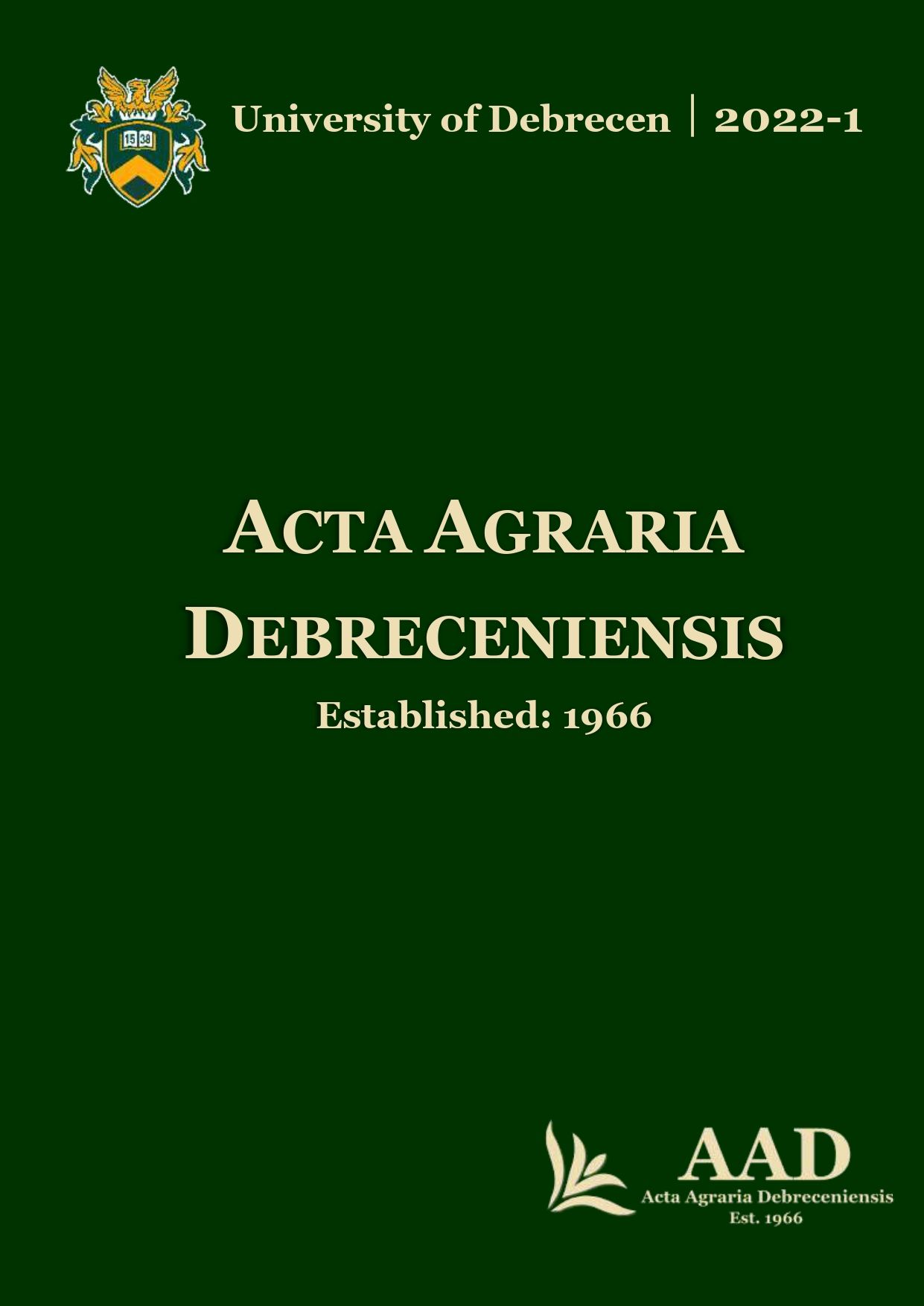Examination of the efficacy of different fungicides against Macrophomina phaseolina and Sclerotinia sclerotiorum in laboratory conditions
Authors
View
Keywords
License
Copyright (c) 2022 by the Author(s)

This work is licensed under a Creative Commons Attribution 4.0 International License.
How To Cite
Accepted 2022-04-14
Published 2022-05-26
Abstract
Macrophomina phaseolina and Sclerotinia sclerotiorum are two significant fungal pathogens of sunflower. M. phaseolina causes charcoal rot and ashy stem blight in several important crop species. Sclerotinia sclerotiorum causes white mold disease which can occur as middle stalk rot, head rot and premature plant death. Due to the wide host range of the two pathogens and their survival structures, crop rotation cannot provide sufficient protection against them. In our experiment, we selected two fungicides, Mirage and Prosaro, which are widely used in practice, and we tested their efficacy against the two pathogens. The efficiency of these fungicides was tested at a concentration of 10; 20; 50; 100 and 500 ppm. The Prosaro totally inhibited the mycelial growth of both pathogens at a concentration of 50 ppm, 100 ppm and 500 ppm. The Mirage caused total mycelial growth inhibition in all treatments against both pathogens.
References
- Boland, G.J.–Hall, R. (1994): Index of plant hosts of Sclerotinia sclerotiorum. Canadian Journal of Plant Pathology 16, 93–108.
- Csüllög, K.–Rácz, E.D.–Tarcali, G. (2020): effectiveness of different fungicides against Macrophomina Phaseolina in poisoned media technique in Vitro In: H.K., Chourasia; Krishnendu, Acharya; Vivek, Kumar Singh Precision Agriculture and Sustainable Crop Production New Delhi, India: Today and Tomorrow's Printers and Publishers, ISBN: 9788170196679. pp. 53–62.
- Dinakaran, D.–Ramakrishnan, G.–Sridhar, R.–Jeyarajan, R. (1995): Management of sesamum root rot with biocontrol agents. Journal of Oilseeds Research, 12 (2): 262–263.
- Eswaran, A.–Mishra, R. (2004): Mycoparasitic potential and variabilitity of Aspergillus spp. to manage dry root rot of blackgram (Vigna mungo L.). Indian Journal of Plant Protection, 32 (2): 89–92
- Ghias, M.–Rauf, S.–Qamar, R.–Din, A.–Mahmood, T.–Aftab, M. (2021): Evaluation of sesame (Sesamum indicum l.) genotypes for charcoal rot (Macrophomina phaseolina) resistance. Pakistan Journal of Phytopathology, 33(2), 357–361.
- Herbar, P.–Berge, O.–Heulin, T.–Singh, S.P. (1991): Bacterial antagonists of sunflower (Helianthus annuus L.) fungal pathogens. Plant and Soil, 133 (1): 131–140.
- Kaur, G.–Lujan, P.–Sanogo, S.–Steiner, R.–Puppala, N. (2019): Assessing in vitro efficacy of certain fungicides to control Sclerotinia sclerotiorum in peanut. Archives of Phytopathology and Plant Protection 52, (1–2) 184–199.
- Kavitha, K.–Mathiyazhagan, S.–Sendhilvel, V.–Nakkeeran, S.–Chandrasekar, G.–Fernando, W.G.D. (2005): Broad spectrum action of phenazine against active and dormant structures of fungal pathogens and root knot nematode. Archives of Phytopathology and Plant Protection, 38 (1): 69–76.
- Marquez, N.–Giachero, M.L.–Declerck, S.–Ducasse, D.A. (2021): Macrophomina phaseolina: General Characteristics of Pathogenicity and methods of control Frontiers in Plant Science (12) 634397.https://doi.org/10.3389/fpls.2021.634397
- Nelson, B. (1998): Biology of Sclerotinia Proceedings of the 10th International Sclerotinia workshop, 21 Jan. 1998, Fargo, ND, USA, North Dakota State University Department of Plant Pathology, Fargo, ND, p. 1–5.
- PoSlušná, J.–Plachká, E.–Mazáko J. (2018): Influence of selected fungicides registered in the Czech Republic for winter oilseed rape on in vitro Sclerotinia sclerotiorum mycelial growth. Plant Protection Science, 54(No. 2),. doi:10.17221/137/2016-pps. 101–110.
- Siddiqui, Z.A.–Mahmood, I. (1993): Biological control of Meloidogyne incognita race 3 and Macrophomina phaseolina by Paecilomyces lilacinus and Bacillus subtilis alone and in ombination on chickpea. Fundamental and Applied Nematology, 16 (3): 215–218.
- Smolińska, U.– Kowalska, B. (2018): Biological control of the soil-borne fungal pathogen Sclerotinia sclerotiorum –– a review. J Plant Pathology 100, 1–12 https://doi.org/10.1007/s42161-018-0023-0
- Vincent, J.M. (1947): Distortion of fungal hyphae in the presence of certain inhibitor. Nature, 159–850.
- Yuen, G.Y.–Kerr, E.D.–Steadman, J.R.–Craig, M.L. (1992): Bacterial biocontrol of white mold disease (Sclerotinia sclerotiorum) Annual report of the Bean Improvement Cooperative. 35, p. 54–55.

 https://doi.org/10.34101/actaagrar/1/10692
https://doi.org/10.34101/actaagrar/1/10692